
For 800 years in this land,
we have passed down a sincere artisanship of
grinding smoked-dried wood and applying urushi.

Smoke-Dry
Rough-carved pieces made from
domestic wood are smoked-dried over time.
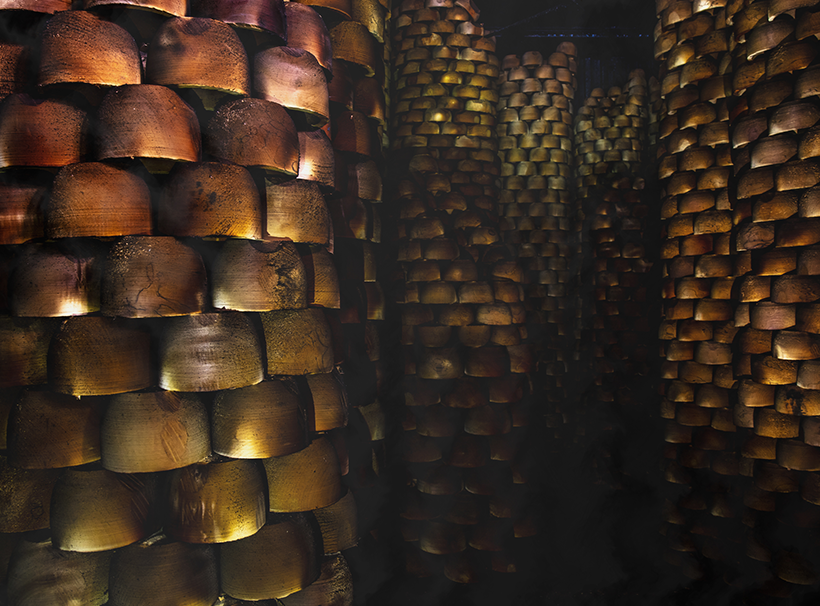
Kawatsura lacquerware is a traditional Japanese lacquerware made by carving domestic wood and smoking it slowly at low temperature over time. The process reduces warping and twisting that might lead to crack. The smoke also combines with the wood’s protein, making it stronger and protecting it from rot and insects.

Hananuri (flower coating)
Hananuri (flower coating), an advanced finishing technique.
Kawatsura lacquerware is characterized by its thick finishing coat.
The artisans apply urushi with skill and precision to create a smooth and glossy finish.
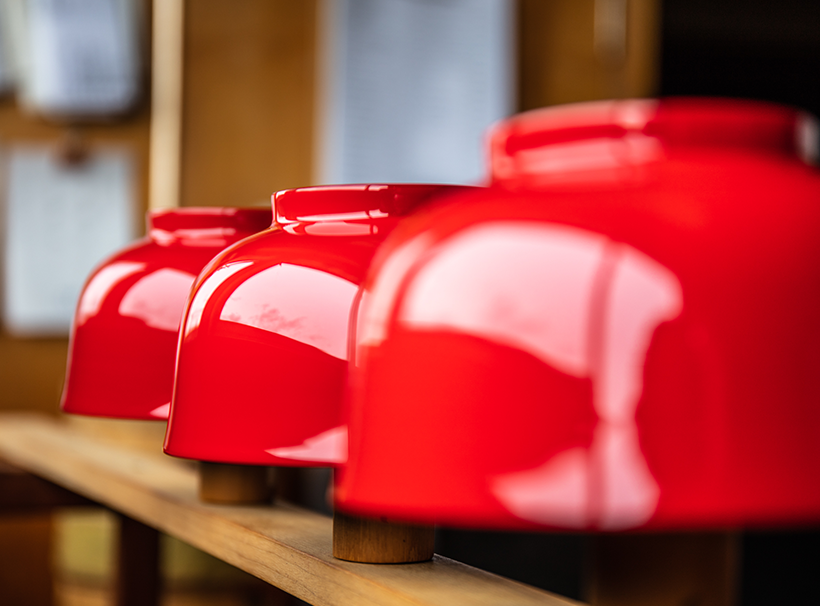
The beauty of Kawatsura lacquerware is the “hananuri” technique, which is to apply a thick surface layer of urushi and finish it without polishing or burnishing, while predicting the flow of the urushi. The technique respects the natural lines and luster of urushi, creating a rich curve and a soft and plump texture with urushi.
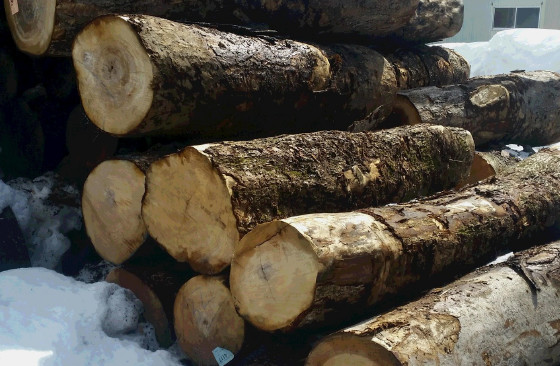
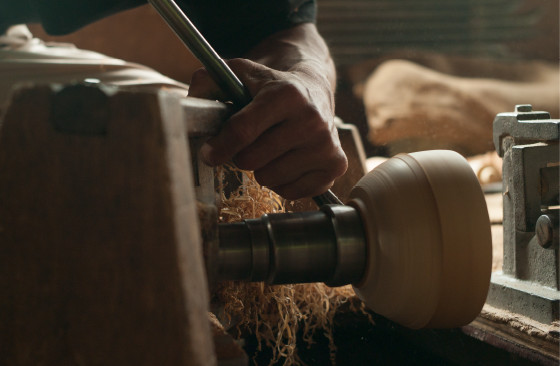
| Wood | Wood is mainly sourced from broadleaf trees such as beech, Japanese horse chestnut, and katsura in the Ou Mountain Range. |
|---|---|
| Wood cutting | The logs are roughly cut to approximate dimensions, avoiding knots and damaged areas in the material. |
| Rough grinding or shaping | Using a lathe equipped with an iron template, the artisans carve the inside and outside surfaces of the wooden piece into approximate shape. |
| Smoke-drying | After boiling the rough-shaped piece of wood to remove the tannins, it is dried for one month in a room where smoke of waste material circulates. |
| Final grinding or shaping | Guided by the iron template attached to the lathe’s base, the artisans move the hand plane to shape the wood. |
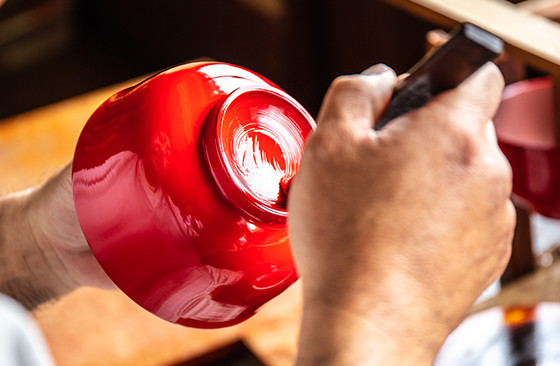
| Makiji and Urushi-honkataji |
In the undercoating process, raw urushi is directly applied to the wood to create a strong bottom layer. |
|---|---|
| Intermediate coating and final coating |
Hana-nuri (flower coating) is a representative finishing technique that involves repeatedly coating and polishing the surface. The final coating is left unpolished, resulting in a glossy texture that requires advanced skills in the smooth application of urushi. |
Lacquerware is
a high-function
practical container.
It was used as a tiered food box for osechi, a traditional Japanese New Year’s cuisine, because of its antibacterial effect. It also has good heat insulation and makes food taste better.

Lacquerware is lightweight, durable, and has excellent insulating function. In addition to its heat-retaining property, which allow you to enjoy warm food deliciously, it is a practical container that also has the effect of suppressing the growth of bacteria. With its coating power and texture created from natural materials, it can be used for a variety of dishes on a daily basis at your usual dining table. Also, as you use it, the luster is added, the beauty increases, and it lasts for a long time.
Easy care
The reason Kawatsura lacquerware can be used as an everyday item is the simplicity of its care.
A lifetime use is possible with simple care.

For cleaning, wash a piece with lukewarm water and wipe it with a soft cloth. You can also use a neutral detergent. If something like rice or mochi has stuck to a piece, soak it in lukewarm water for a short time without scrubbing, after which the food will fall off automatically, and then wash it to prevent damages on it.
Kawatsura lacquerware is made of wood, so avoid leaving it in water for a long time. It is also sensitive to high temperature, so do not ever place it in a dishwasher, dryer, microwave, or oven. Boiling soup or freshly fried tempura can cause the lacquer to discolor, so please be careful.”
The best way for a long time use is to use it every day. Excessive drying can damage the wood, so using and washing it regularly will help the luster increase. And by storing it in a place away from direct sunlight, not leaving it in the refrigerator for long periods of time, and respecting its unique characteristics, you can use it for a long time.

